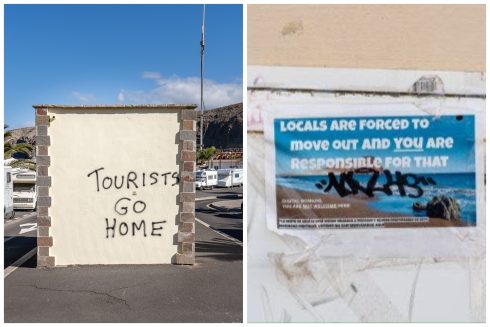
Government spends five billion euros in demolishing coastline constructions
THOUSANDS of homes are to be demolished in a revolutionary new plan to save Spain’s coastline.
Dozens of hotels and other constructions – such as plastic greenhouses – are also to be knocked down in the five-billion-euro scheme.
The move will remove buildings from 800 kilometres of Mediterranean and Atlantic coastline.
“Our intention is to negotiate instead of directly expropriating the land,” the government’s biodiversity secretary Antonio Serrano said.
The plan – which needs the backing of authorities in the country’s 11 coastal regions – will see cement replaced with a one-thousand-kilometre network of footpaths.
“Without the support of the regions, it will not be possible to apply this plan. We have to convince local administrations that demolishing these constructions will result in the growth of quality tourism,” Serrano added.
Under Spanish law, beaches are classed as public land. A further minimum area of 106 metres should be free of any construction.
However, central government only has authority over the sands with the remaining land falling under local authority jurisdiction.
The move is seen as a radical change in coastal policy, which has seen construction destroy large parts of not only the Mediterranean coast but also the Atlantic coast and Canary Islands.
A recent Greenpeace report found that an area equivalent to three football pitches of coastline is lost per day to construction.
In 2006 alone, almost one million new constructions were erected along the coast.
In some parts of Spain, the demolition of homes built upon public coast land has already begun.
Since 2004, 750 constructions have been removed, including 418 homes in El Sauzal in Tenerife last year.









the Olive Press article mentions 800 kms – the actual figure is actually 8000 kms.
Perhaps the error occurred because 782 kms of pathways on bordering the seashore/coastline will be created for anyone’s use either on foot or on bicycle, rather than by car.
Clive (wildside)
Sorry, my mistake. That’ll teach me for not checking my data properly :)
The figure of 800 Km is correct. It has to be because there is only 5000 KM of Spanish coastline. (the whole of Iberia is 8000).
Excellent observations though on the forum
http://www.iberianatureforum.com/index.php/topic,868.0.html
I am guessing, only guessing, that the demolition costs will be largely or in part subsidized by Brussels. Which means that there will be ample money to spread around to many of the same colluding constructors and local officials responsible for its destruction. It can now be argued – more than a little ironically – that the coast’s restoration is ‘good business’ for the same reason as the one given for its ‘development.’ It puts more money into the local economy!
Here in Asturias the ayuntamiento received funds to put in a playlot within the city park. Knowing that it was against EU safety and health regulations, they installed creosote and arsenic treated wood as a play surface. A few months later they received more subsidies to remove the prohibited materials and bring it into EU safety norms.
The point is that this is all about money – or I should say, using someone else’s.